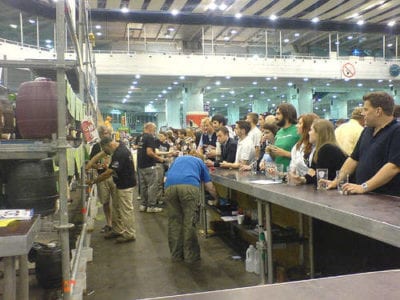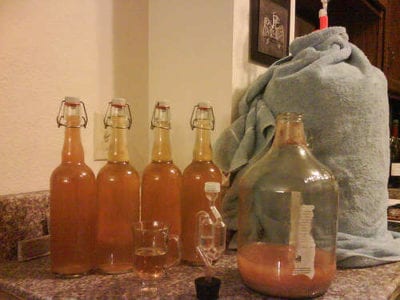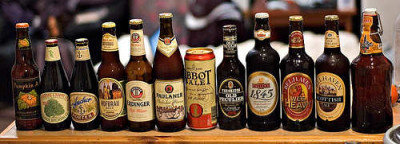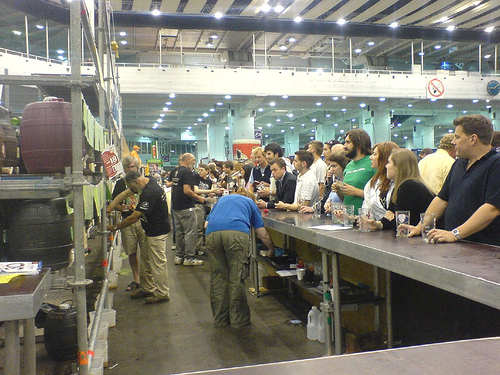
If you’re in the food and beverage industry, be it as a restaurant owner or Food and Beverage Director, it’s essential that you constantly evaluate and update your offerings to match what you customers are demanding. A recent article in Bloomberg’s Businessweek highlighted major brewer’s increasing belief – and more convincingly, investment – that cider is a growing trend in the U.S.
Hard cider sales are up 25% annually over the past five years with increases driven by a combination of the younger, craft beer crowd, the increasing number of people seeking to avoid gluten, and women. Because it’s fruit based, these groups all see cider as a healthier alternative to other choice.
Though cider’s popularity is growing and can be a fun draw and addition, beer is of course still the favorite. Offering both in a beer and cider-based bar theme is fun, casual, and sunny, just right for the upcoming summer. A beer-and-cider theme goes particularly well with daytime, barbecue, and outdoor events.
Selecting and Stocking Ciders
Though all of the the options I talk about here are hard ciders, don’t forget to include some good soft cider for the non-alcohol drinkers. By law any cider with more than 0.15% of alcohol by volume is classified as hard cider. Drinks like Cidre de glace (ice cider, or apple ice wine) where the apples are frozen before or after harvest, can have an ABV of up to 13%.
American ciders are roaring to the front of the cider race, with ranges available from artisanal cider makers like Foggy Ridge, West County, and Eden Cidre de Glace from Vermont.
Stock a couple of the more popular ciders (local varieties tend to be the most successful) and see what kind of response you get. Prep your bartender with a bit of history and background and be able to emphasize the gluten-free status if that’s a concern.
European ciders are another option are generally lighter in taste, if not in alcohol content, and there’s a lightly sparkling rose cider, Jacques Fruit du Bois, which is making serious inroads in the wine market. I’d highly recommend it if you don’t have a local pink and foaming equivalent!
Stocking the Beer
Overall, this is a theme that really suits tap service, so consider kegs for the primary options with bottled or canned alternatives to suit more particular tastes.
Keeping all the drinks chilled can be a challenge if you’re holding an outdoor event. Stocking your bar with more ales than lagers can help out though. Ales generally taste best near room temperature, so they can stand a bit of heat. If chilling isn’t a problem, lagers are certainly more popular.
If you have a local craft brewery (and with over 2000 now operating in the U.S., you do) add some local choices. Craft beers offer a unique taste and story and is growing in popularity with consumers. Aim to offer at least a couple of popular local beers. If possible, include at least one ale for as wide a taste range as possible.
Though getting ahead of the trends may be important, the most popular lager is usually still Budweiser, Bud Light, and similar options from Coors and Miller. Have plenty of stock – kegs, cans and bottles – for the big sellers.
Add a few international options for variety – Corona, Heineken, and Guinness go down well and are generally popular.
Of course, no one knows their customers as well as you do, so make adjustments based on your experience.
Jazzing it up
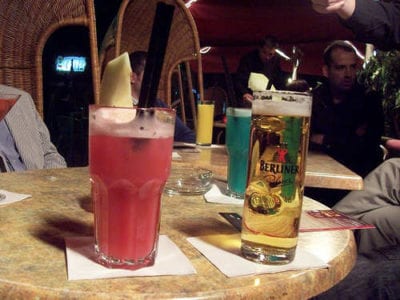
Beer Cocktails (Photo Credit: Flickr)
If you’re looking to add a couple of more exotic options without adding to your stock. There are a couple of easy combinations that a beer and cider bar lets you take advantage of.
The Snakebite is a classic (half-lager, half-cider, with more kick than either).
The Black and Tan is a more common well known – pale ale mixed with a stout (even Guinness, if you have no other stout beer) – but goes down well.
